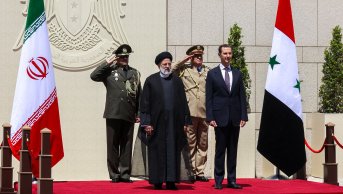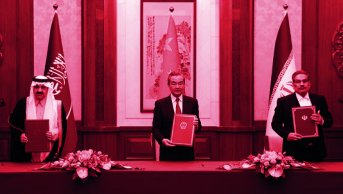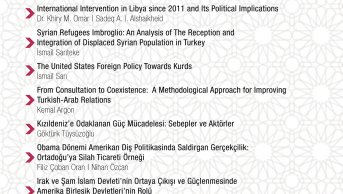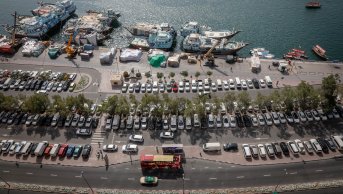Iran's Strategy in the Bab el-Mandeb Strait and Houthi Attacks
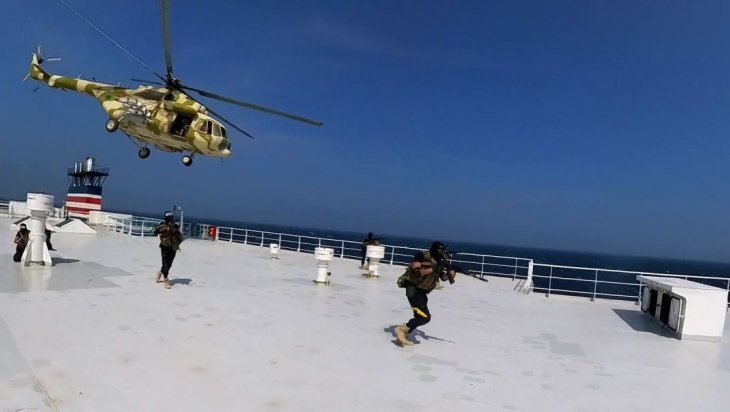
Maritime security in the Bab el Mandeb Strait, the so-called "Gate of Tears" that connects the Gulf of Aden and the Sea of Oman to the Mediterranean Sea via the Red Sea and the Suez Canal, continues to be a source of concern due to Houthi attacks that began after the October 7 Israel-Hamas war. It is crucial to note that approximately 12% of global trade and 30% of the world's container traffic traverse the Red Sea and the Bab el Mandeb Strait. The strategic significance of these regions is evident. Ensuring the uninterrupted flow of trade through the Bab el Mandeb Strait is vital for the global economy and, consequently, for the US economy. Given the current circumstances, major shipping companies such as Maersk, Hapag Lloyd, and MSC have declared the suspension of their operations in the Red Sea. While a significant disruption in global maritime trade is unlikely, transportation times will extend and costs will rise as ships seek alternative routes, resulting in increased insurance expenses. For instance, BP has announced its decision to avoid sending crude oil and oil tankers through the Suez Canal due to the risk of Houthi attacks. The Suez Canal route has gained even more significance since European countries ceased purchasing Russian oil."
The Houthis have a lengthy history of posing threats to maritime traffic through the Bab el-Mandeb Strait due to their close ties with Iran and their opposition to the United States, Israel, and Saudi Arabia. From compelling Riyadh to halt tanker traffic in 2018 to recent attacks on Israeli-linked vessels, the Houthis have consistently exerted disproportionate pressure on the security of the Red Sea. Recognizing this ongoing threat, on December 18, U.S. Secretary of Defense Lloyd J. Austin announced the establishment of a multinational maritime task force, Operation Prosperity Guardian. This initiative aims to prevent attacks on commercial vessels and other targets by the Iranian-backed Houthis in Yemen. According to a statement from the Pentagon, the Houthis have launched more than 100 drone and ballistic missile attacks, targeting 35 commercial vessels from 10 different countries.
The Bab el-Mandeb: Iran's Second Strait of Hormuz
In the 'shadow war' between Iran and Israel, there have been numerous attacks against commercial vessels, mostly in or near the Strait of Hormuz and the Bab el-Mandeb Strait. These attacks demonstrate that it is possible for them to impede international navigation in a busy waterway. Since 2019, Israel is known to have carried out a dozen covert attacks against. Iranian-flagged oil tankers bound for Syria in the Red Sea and other maritime areas around the Arabian Peninsula. Israel's first attack on Iranian-flagged tankers took place in October 2019, when the Sabiti tanker was subjected to a missile or limpet mine attack in the Red Sea near the mainland coast of Saudi Arabia. Similarly, in and near the Strait of Hormuz in the summer of 2019, there were a series of attacks and intrusions against commercial vessels, for which Iran was widely blamed. Iran has also allegedly organized attacks on Israeli commercial vessels in the waters around the Arabian Peninsula. For example, in late February 2021, the Israeli cargo ship Helios Ray was damaged by explosions in the Gulf of Oman, affecting both sides. The Israeli Prime Minister attributed this attack to Iran. A month later, an Iranian missile was reported to have hit an Israeli-flagged container ship in the Sea of Oman. April 2021 saw the escalation of the hybrid naval war between Israel and Iran, with Israel allegedly targeting an Iranian military vessel for the first time in a covert operation.
Examples of attacks between Iran and Israel can be multiplied. For Iran, these "hybrid" methods of attack are carried out by individual ships and boats that are not part of its armed forces, do not carry the Iranian flag, or cannot be directly linked to the actions of the Iranian leadership. These vessels may be operated by proxies such as the Houthis or by "false flag" groups created for the occasion. The Iranian Navy and IRGC Navy have established an increased presence in the Gulf of Oman to "prevent smuggling" and in the Gulf of Aden and near Yemen to "deal with Somali pirates." In this context, Iran's asymmetric maritime warfare capabilities play an important role in the country's security strategy. These capabilities provide effective offense and deterrence against its enemies through modern and flexible tactics instead of traditional naval forces. With the Houthi attacks in the Red Sea, Iran is increasing its influence in the region by using asymmetric strategies at sea. Through methods such as missile and drone strikes and covert operations, Iran manages to restrict maritime traffic and put its enemies, such as Israel and the United States, under pressure and in a difficult situation.
Therefore, there is potential for the US to pursue a broader strategy not only against the Houthis but also against Iran due to increased attacks. The special naval force could strengthen security cooperation with US allies in the region and increase US influence in the region. In particular, this could be seen as a step towards strengthening security cooperation with US allies such as Israel, the United Arab Emirates, and Bahrain. In addition to the United States, other actors in the region are reacting to the Houthi attacks on ships in the Red Sea and Bab el-Mandeb region and considering various strategies. The long-term effects of these developments will significantly affect the security and geopolitical balance in the region.
Tension Rises in the Red Sea
The United States and Britain launched more than 60 airstrikes on targets in Yemen in the early hours of Friday, January 12, in an attempt to stop the Iranian-backed Houthi group from attacking ships in the Red Sea. According to the US military and the Houthis, American and British forces targeted 16 locations, including airfields, radar facilities, drones, and missile storage and launch sites. The US strikes were carried out by jets from the USS Eisenhower aircraft carrier, as well as Tomahawk missiles launched from a submarine and other ships. The UK sent jets from a base in Cyprus. The US and UK said the aim was to break the Houthis' ability to continue attacking merchant ships. By attacking Houthi military targets, the US and the UK want to weaken the Houthis' offensive capabilities in the Red Sea. The challenge, however, is how willing the US, UK, and the coalition will be to launch additional strikes if the Houthis continue to attack ships. The current US and UK strikes are unlikely to stop Houthi attacks in the Red Sea. It will be necessary to continue to respond to Houthi attacks in order to establish deterrence. Therefore, it may be the first coalition strike against the Houthis, but it will not be the last. To establish deterrence against the Houthis, Washington may need to pursue a broader strategy to send a message to Iran's other proxies that the United States is willing to use force in the region to protect not only itself but also its allies and partners.
Conclusion
Iran's Islamic Revolutionary Guard Corps (IRGC) announced the destruction of a Mossad base in Erbil, Iraq, in retaliation for the recent assassinations of commanders of the Iranian-led 'Axis of Resistance'. In response to the January 3 bombings in the city of Kirman, which were claimed by Daesh-Khorasan, missiles were fired at targets in northern Syria. A missile attack on the Balochi terrorist organization Jaish al Adl's bases in Pakistan also took place on January 16, and the organization is believed to have collaborated with Daesh in the January 3 Kirman attack. Therefore, the Iraqi Kurdistan region is currently seen as the best and least risky target for Iran, which feels that it needs to do something in an environment where the pressure to take direct action is increasing. Similarly, it is understood that Yemen has been chosen as a launching pad as a less risky region for Iran, which has carried its strategy in the Strait of Hormuz to Bab el-Mandeb through the Houthis. By spreading the conflict to these areas, Iran plans to put pressure on Israel and the United States and to reduce Israel's pressure on Hezbollah and Hamas.
Since the start of the Gaza war on October 7, it has not taken any significant action, except for the Houthis' attacks in the Red Sea, despite threats of escalation by the Iranian-led regional network, the so-called "Axis of Resistance." It is especially clear that Hezbollah does not want to be fully involved in the war. Even the killing of Sayyed Reza Mousavi, commander of the Quds Force in Syria, followed by the killing of Saleh al-Arouri, deputy head of Hamas' political bureau in Lebanon, Abu Taqwa al-Saidi, one of the commanders of the al-Nujaba Movement of Hashd al-Shaabi in Iraq, and finally the killing of Wisam Hassan Tawil, a senior Hezbollah commander in Lebanon, were met with "strategic patience." It should be noted that Iranian officials and the Iranian media have said that the missile attacks were revenge, but this is not the truth. Therefore, it can be said that this approach of strategic patience will continue until the end of the Gaza war and that Iran will respond with limited and small-scale attacks. Under the current circumstances, Iran's priority is to avoid being drawn into a conflict with Israel that could ultimately involve the United States. Especially since the October 7 Operation Aqsa Flood dynamited a possible normalization between Israel and Saudi Arabia, and given Tel Aviv's failure in the Gaza war, such a war would do nothing but harm Iran. On the other hand, four years after the assassination of Qasem Soleimani, even the promises of "harsh revenge" made by Supreme Leader Ali Khamenei have not been fulfilled.


